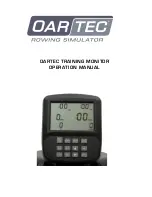
Select Prg.1..16
While you still hold down the Vocoder-key press the number key 1 - as shown in the photo.
Than say a couple of words into the Goose-neck microphone of the Sirius. You should put your
mouth quite close to the microphone (see drawing!!!)
Should your Sirius be connected to a audio-unit such as a stereo system or instrument amplifier,
turn up the volume control of the amplifier until you have reached the desired volume. If you
experience feedback even at very low volume-levels, try putting more distance between the Sirius
and the Speakers.
You will now hear, either through your headphones or speakers, not your original voice but the voice
of a seemingly unfriendly robot.
Perhaps you find that you have to speak very loudly to produce a regular robot-voice despite the fact
that you have your mouth very close to the microphone. In this case turn the Gain-control on the
rear of the Sirius
to the left (when facing the rear panel) until you get a balanced signal. Try
to avoid over-the-level settings which you will recognise because they will be distorted.
Let´s try the other basic programmes as well: Hold down the Vocoder-key again and press one of the
Number-keys from 2-14 (on 15 and 16 you have the basic programmes of the filter banks, and will
hear nothing when in Easy-Mode). Programme no. 2 will change your voice for instance into a poly-
phonic choir. To do this start factory song no. 1 "Saturn" and add your own vocal-hooks. The pitch of
the choir is not changeable in the Easy-Mode. How you change the pitch will be described in the fol-
lowing chapter.
Listening through the different basic programmes you will note that not all of them are good for vo-
cals. Some programmes are designed more for use with artificial sound sources.
care-
fully
carefully
The Vocoder
81
CARRIER-IN
ANALYSE-IN
GAIN
Gain-Control
Increasing the
input sensitivity
















































